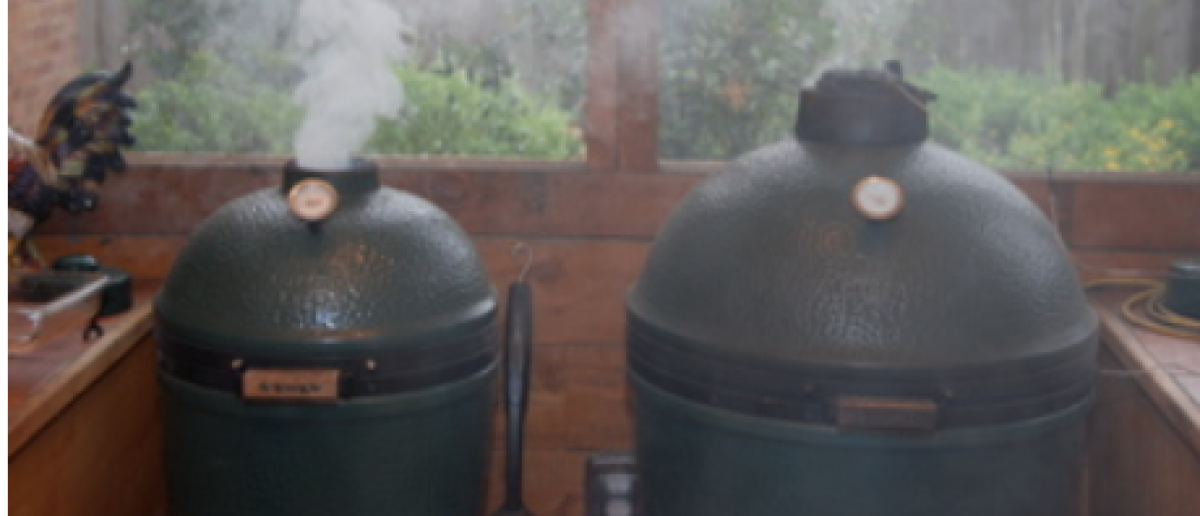Why sous vide?
It’s so easy to just throw some burgers on the grill, give them a couple of flips and serve them up! Well, how many times have you undercooked or worse, overcooked them ending up with dry, chewy or crumbly burgers? The grill temp can vary from one cook to the next and certainly from one area of the grill surface to another, giving inconsistent results. How about juicy, perfectly cooked burgers with pink insides? Yes, pink ‘store-bought’ hamburger meat, but safe from any bacterial contamination. Sous vide is the route to these results.
How Sous Vide works:
(1) Sous vide (French for under vacuum) is a method of cooking protein or vegetables in vacuum-sealed bags in a temperature-controlled water bath. This method is used in many high-end steak restaurants for rapid cooking of perfectly cooked steaks – remove it from the water bath (maybe 125-130*), sear it briefly on the grill and serve it to the customer.
(2) Restaurant quality sous vide machines can be purchased for home use (though they are expensive and take up a good bit of counter space). There are a few smaller precision immersion sous vide products on the market that are more convenient and less costly. I have the original Anova model (they now make Bluetooth and WiFi-compatible versions). Sansaire makes a similar product and there is a WiFi-only product called Joule. These all clamp to the side of a large pot or plastic tub and work on the principle of an immersion heater with tightly-controlled temperature and a fan to circulate the water, ensuring even temperature throughout the water bath.
(3) Food safety: Pasteurization of meat (reduction of the harmful bacteria in the meat) is based on a combination of internal temperature PLUS the length of time it is maintained at that temperature. For example, from FDA pasteurization charts hamburger meat is safe if cooked at 135* for 27.33 min., while it only takes 5.19 sec. at 160* internal temp. The beauty of sous vide is the ability to maintain an accurate water bath temperature for extended period of time, thus allowing one to pasteurize meat at a lower temperature, which when combined with a finishing sear, produces juicy, tender results that would be difficult to obtain otherwise.
Sous Vide Burgers:
For the burgers, I purchased a 4# pack of ground chuck (80/20) from Sam’s Club. I formed the meat into eight 8 oz. balls, then shaped these into seven, thick 4” wide patties & two 4 oz. child patties. I pressed a dimple in the middle of each patty to help them keep their shape while on the grill, then generously seasoned them with Cluck & Squeal Beef Specific rub. I carefully placed four patties each into gallon freezer ziplock bags, compressed the air out by immersing in a sink full of water, and placed them in the sous vide water bath which was at 133*. I placed serving spoons between the bags to keep them weighted and separated for better water circulation.

After 60-70 minutes I removed the bags and let them cool to room temperature (to help maintain their shape when grilling) while preparing the grill. In the following picture, they are patiently waiting for the grill:

I prepared my large Big Green Egg (BGE) for a direct cook at 350-400* with the grid at the fire ring level and Grill Grates on the grid. At a dome temp of 400*, the Grill Grates measured 500* on an infared (IR) thermometer. I seared the burgers for about 90 sec. on one side, flipped and seared another 90 sec. on the other side.

Love my Grill Grates!
I then flipped once more and added bleu cheese. At this point I closed the bottom vent and let the ambient heat soften the cheese.

After a minute or so, I topped them with previously sautéed mushrooms, allowing them to warm for another 30-45 sec., then removed from the grill.

(I apologize for forgetting to take a picture of a cut burger, because the inside was juicy and pink throughout)!
Guests made burgers or ate like hamburger steaks. I heard a comment: “This is the best burger ever“!
Enjoy,
Misippi Egger
(Clark Ethridge)
**********
Serves 8
Ingredients:
4 lbs ground chuck
Favorite hamburger seasoning
Fresh bleu cheese (or other cheese)
Optional – sautéed mushrooms, peppers, etc.
Instructions:
(1) Prepare the sous vide water bath per the instructions with the sous vide immersion heater and set the temperature for 133*F.
(2) Form meat into 8 oz. balls, then shape into 1″ thick patties and make dimples in the center of one side. Season well on both sides.
(3) Carefully place the patties in gallon ziplock bags (4 per bag) and immerse in water, squeezing the air out before sealing. Place the bags in the sous vide water bath, separating them with a utensil, if needed to allow for good water flow around the bags. Set the timer for 60 minutes or up to 90 minutes.
(4) When the meat is done, remove the bags from the water bath and rest on the counter to let them approach room temperature while you are preparing the grill.
(5) Prepare the BGE (or other grill) for a direct cook at 400* or so. Grill the burgers for 45-90 sec. on each side, then make one last flip before adding the cheese. Close down the vents to let the ambient heat soften the cheese, then add any mushrooms, onions, peppers, etc. on top.
(6) Remove from the grill and serve immediately (a rest is not necessary when using the sous vide method).






